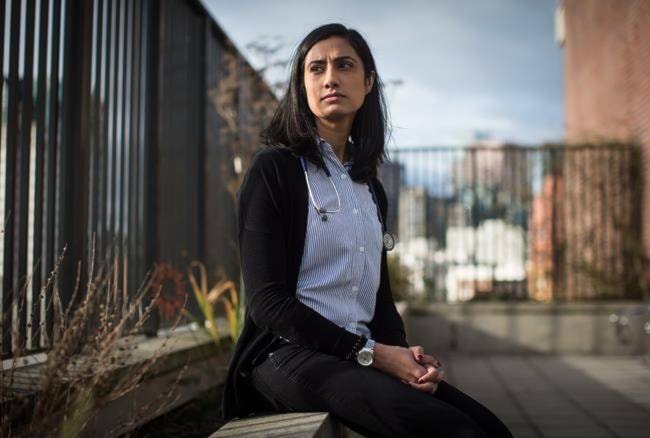A medical clinic in B.C. and a social service agency in Alberta are set to expand their programs to meet the often-hidden and growing problem of South Asians battling addiction to opioids.
The Roshni Clinic opened last spring in Surrey to provide services for South Asian clients addicted to alcohol and stimulants including amphetamine and cocaine. But more programs will be offered in the coming months to deal with the use of opioids such as heroin, oxycodone and Percocet, said Dr. Rupinder Brar, an addiction specialist who works at the facility.
READ MORE: Substance use clinic for South Asians opens in Surrey
“Thirty per cent of the population in Surrey is Punjabi speaking,” she said.
“There are physicians out there who’ve been there for a while providing services, and I’m sure these patients bring their friend or a doctor may have a translator but it would be nice to expand those services in a way that is culturally sensitive and provide therapy to the family as well.”
However, she said immigrant patients urgently need treatment and counselling from health-care providers who speak Punjabi or Hindi, and that’s what Roshni — which means light — will offer them.
Brar lauded the Alberta government for providing $560,000 in funding last December for Punjabi Community Health Services in Calgary and said she is hoping for increased resources from the B.C. government.
Rimpy Hehar, a registered psychologist with the Alberta social services agency, said starting in March, provincial funding will be used to offer culturally tailored services including counselling and distribution of the overdose-reversing drug naloxone as well as referral to harm reduction services at supervised consumption sites.
It’s difficult to know how many people in the South Asian community are struggling with opioid use disorder in the Calgary area, Hehar said.
“We’re finding that there is an overwhelming number of people within the northeast region of Calgary who are using opioids,” she said, adding the area is home to a large South Asians population. “People may be less likely to seek help because of keeping issues of the family within the family house.”
Providing support to family members who have shouldered the burden of a loved one’s opioid use until finances and relationships may have collapsed will be key, Hehar said.
“What we find is that family structure, family support, those can play a huge role in recovery or even the way that addiction progresses within a family setting,” she said.
In Ontario, naloxone distribution and counselling are already offered through Punjabi Community Health Services in Brampton and Mississauga, said CEO Baldev Mutta.
He said 90 per cent of their clients struggling with opioid addiction are Punjabi Sikhs and services are also available in Hindi, Gujarati and Malayalam, a language mostly spoken in the south of India.
Opioid addiction is a big issue among men working in the trucking and taxi industries, he said.
“They are city and long-haul truck drivers,” Mutta said. “All these youngsters who are between the ages of 21 to about 30, they are into the trucking industry and that’s where these drug dealers prey on them.”
Drivers are often offered $5,000 to make a round trip between the Toronto and Vancouver areas in four days, he said.
“They say, ‘All the truck drivers do it.’ And they hook them on a mixture of heroin and crystal meth. You just don’t fall asleep and then you crash after about four days and you don’t wake up for two days,” Mutta said.
Many of the drivers are enticed to make money so they can get settled in Canada as new immigrants but often find themselves facing drug charges without any knowledge of the legal implications, he said, adding families often to end up financially ruined.
Mutta said he regularly raises the issue of opioid abuse on Punjabi TV and radio programs, but said more community leaders must step up to create awareness about the crisis.
“The silence is deafening in our community around it.”
Camille Bains, The Canadian Press
